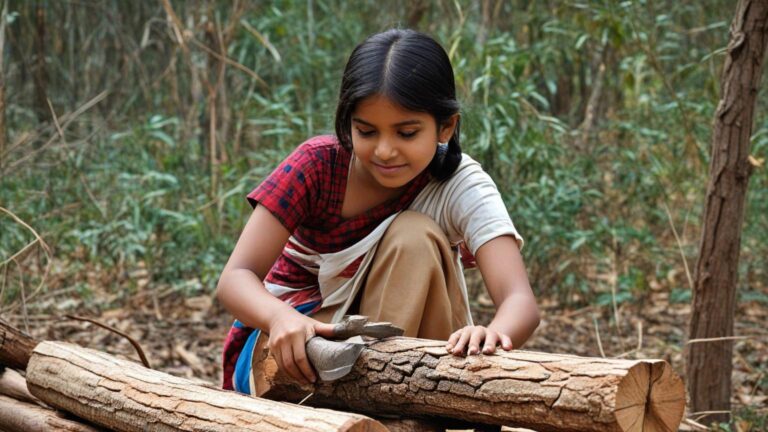Important Facts about Ram Mandir
| Chief Architects | Chandrakant Sompura, and his two sons – Nikhil Sompura and Ashish Sompura. |
| Design Advisors | IIT Guwahati, IIT Chennai, IIT Bombay, NIT Surat, Central Building Research Institute Roorkee, National Geo Research Institute Hyderabad, and the National Institute of Rock Mechanics. |
| Construction Company | Larsen and Toubro (L&T) |
| Project Management Company | Tata Consulting Engineers Limited ( TCEL) |
| Sculptors | Arun Yogiraaj (Mysore), Ganesh Bhatt and Satyanarayan Pandey |
| Total Area | 70 Acre (70% green Area) |
| Temple Area | 2.77 Acre |
| Temple Dimensions | Length – 380 Ft. Width – 250 Ft. Height – 161 Ft. |
| Architectural Style | Indian Nagar Style |
| Architectural Highlights | 3 stories (floors) 392 pillars 44 doors |
| Bhoomi Pujan | 5th August 2020 |
| Proposed Date of Inauguration | 22nd January 2024 |
Major Construction Materials Used
The use of Steel or Iron has been completely avoided in the construction of Ram Mandir. Instead, traditional construction materials have been used in its construction to reflect an alignment with traditional building practices along with an emphasis on sustainability.
Major construction materials used in the construction of Ram Mandir are:
- Bansi Paharpur Pink Sandstone from Rajasthan’s Bharatpur district have been used in the main temple structure.
- Granite Stones have been used in the plinths
- White Makrana and Colored Marbles have been used for the inlay work
- Teakwood has been used for the construction of the doors of the temple.
- Special Bricks with “Shri Ram” inscribed on them have been used in its construction.
- These bricks, named Ram Shilas, draw a parallel with the stones used in the construction of Ram Setu, thus intertwining modern craftsmanship with ancient symbolism.
- Other Materials Used: Shaligram Rock, Copper Plates, Gold, and Ashtdhatu
Major Architectural Highlights of Ram Mandir
The grand dimensions and intricate details of the temple design can be summed up as a blend of artistic vision and traditional architectural prowess. Around 550 temples across India were studied to find the best possible architectural design for the Ram Mandir.
Some of the major architectural highlights of Ram Mandir can be seen as follows:
Foundation
- A 14-metre thick layer of roller-compacted concrete, looking like an artificial rock, has been used to construct the foundation of the temple.
- A 21-foot-high plinth of Granite has been constructed for protection against ground moisture.
The Main Temple
- The main temple is built in Nagara Style.
- The original design for Ram Mandir was developed in 1988 by the Sompura family of Ahmedabad. However, in 2020, the old design was modified as per the Vastu Shastra and the Shilpa Shastra.
- This reflects a conscious effort to blend aesthetic grace with ancient wisdom.
- The Sompura family has a rich legacy of temple craftsmanship and has been associated with the design of some renowned Indian temples such as Somnath. Thus, their association brings a sense of continuity to the architectural design of the Ram Mandir and adds a historical and artistic dimension to it.
- The Mandir will have three stories (floors), with each story designed to give the devotees an experience of the various stages of Lord Rama’s divine journey.
- The ground floor of the temple has been designed to depict the story of the birth and childhood of Lord Rama.
- The first floor is designed like Lord Rama’s Darbaar.
- The revered temple consists of a total of five Mandaps (Hall) – Nritya Mandap, Rang Mandap, Sabha Mandap, Prarthna, and Kirtan Mandaps.
- The temple has a total of 44 doors, of which some will be coated with 100 kg gold.
- The main entrance to the temple is called the Singh Dwar. This entrance features a series of statues and busts of prominent characters from Ramayana.
- The pillars as well as walls of the temple are adorned with statues of deities as well as intricate carvings depicting India’s century-old history.
- All along the parikrama path, 100 events from Valmiki’s Ramayana have been engraved on the walkways and columns. The idea is to present Ram Katha Darshan.
The Temple Complex
- The temple is surrounded by a rectangular compound wall, called Parkota.
- The total length of this wall is 732 metres and its width is 14 feet.
- Along with the main Ram Mandir, the temple complex consists of several other religious structures:
- One temple has been built at each of the four corners of the compound. These temples are dedicated to Surya Dev, Devi Bhagwati, Ganesh Bhagwan, and Lord Shiva.
- The northern arm of the temple complex consists of a temple of Maa Annapurna and in the southern arm, there is a temple of Lord Hanuman.
- A historic well called Sita Koop is located near the temple. This dates back to the ancient era.
- Some other temples proposed to be constructed within the temple complex are those dedicated to Maharishi Vashishtha, Maharishi Valmiki, Maharishi Vishwamitra, Maharishi Agastya, Nishad Raj, Devi Ahilya, and Mata Shabri.
- Kuber Tila is located in the southwestern part of the complex. The ancient temple of Lord Shiva located in this part has been restored. Also, a bronze idol of the Ramayana character ‘Jatayu’ has been installed here.
- The temple complex consists of several independent infrastructures of its own
- A sewage treatment plant
- A water treatment plant
- A fire service
- An independent power station.
- A Pilgrims Facility Centre of 25,000 capacity to provide medical facilities and locker facilities to the pilgrims.
- A separate block with a bathing area, washrooms, washbasin, open taps, etc.
- Learning from the damage caused by lightning strikes to some old temples in Mathura and Kashi, around 200 KA light arresters have been installed over the temple structure.
- The temple complex includes a museum showcasing artifacts related to Lord Ram and the Ramayana. Thus. more than just a religious center, the Ram Mandir has been envisioned as a cultural and educational center as well.

